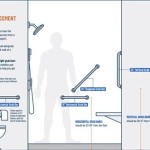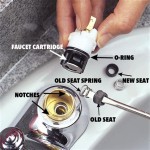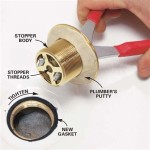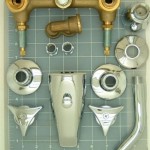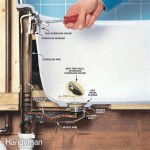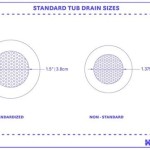How To Drain A Portable Bathtub
Portable bathtubs, designed for flexibility and convenience, offer a bathing solution in spaces where a traditional built-in tub may not be feasible or available. These tubs are commonly used in apartments, rental properties, or for individuals with mobility limitations who need a specialized bathing area. However, one of the crucial aspects of using a portable bathtub is understanding the proper method for draining the water after each use. Improper draining can lead to water damage, mold growth, and sanitation issues. This article provides a comprehensive guide on safely and efficiently draining a portable bathtub, covering various types of tubs and potential complications.
The design of a portable bathtub dictates to a large extent the appropriate draining method. Some models feature a simple drain plug located at the bottom of the tub, while others incorporate a more complex drainage system that includes a hose and a pump. Understanding the specific drainage mechanism of a particular portable bathtub is the initial step towards successful draining.
Before initiating the draining process, it is essential to prepare the surrounding area. This preparation minimizes the risk of water damage and ensures a smooth and efficient process. This includes identifying the drain location, ensuring adequate drainage capacity, and protecting sensitive flooring.
Preparing for Drainage
The first step in preparing to drain a portable bathtub is to locate the drain. Most portable bathtubs have a drain plug or a drain valve located at the bottom of the tub, typically near one of the corners. Some models may have a hose attached to the drain that can be directed to a suitable drainage point. It is crucial to identify the exact location and type of drain mechanism before proceeding.
Next, the drainage capacity of the destination drain must be considered. If the water is being drained into a standard sink or bathtub drain, it is critical to ensure that the drain can handle the volume of water being discharged. Overfilling a drain can lead to overflows and potential water damage. If there is any doubt about the drain's capacity, it is prudent to drain the tub in stages, allowing the drain to clear partially between each phase.
Protecting the flooring surrounding the bathtub is another essential preparatory step. Spills and splashes are common during the draining process, especially with portable bathtubs that may not have perfectly sealed drainage systems. Placing towels or waterproof mats around the base of the tub and along the drain path can help to absorb any spills and protect the underlying surfaces. This is particularly important for carpets or hardwood floors, which are susceptible to water damage.
Finally, appropriate safety measures must be in place, particularly if the water in the bathtub is still warm or hot. Use caution when handling the drain plug or valve to avoid burns. It is also advisable to wear waterproof gloves to protect the hands from prolonged exposure to water, which can cause skin irritation.
Draining a Portable Bathtub with a Drain Plug
The method of draining a portable bathtub with a drain plug is relatively straightforward. This type of bathtub typically has a rubber or plastic plug that fits snugly into a hole at the bottom of the tub. Removing this plug allows the water to drain out through the hole, either directly onto the floor or into a container placed beneath the tub.
Once the preparatory steps are complete, the drain plug can be carefully removed. When removing the plug, be prepared for a surge of water. As mentioned, having towels or mats in place will help to contain any spills. Once the plug is removed, the water will begin to drain. The speed of drainage will depend on the size of the drain hole and the amount of water in the tub.
If the bathtub is positioned directly on the floor and the drain hole is near the floor, the flow of water might slow down considerably as the water level approaches the bottom of the tub. This is because the remaining water has insufficient hydrostatic pressure to force it out of the drain. To remedy this, one can gently tilt the bathtub towards the drain hole. This will concentrate the remaining water around the drain and allow it to flow out more completely. Care must be taken when tilting the tub, especially when it is partially filled with water, to avoid sudden shifts that could cause a spill or injury.
After the majority of the water has drained, a small amount of residual water will likely remain at the bottom of the tub. This can be removed using a sponge or towel. Wiping the interior surfaces of the tub dry after draining it helps prevent the growth of mold and mildew. It also helps to keep the tub clean and hygienic for the next use.
Once the tub is completely drained and dry, the drain plug should be thoroughly cleaned and inspected for any damage. If the plug is cracked, worn, or otherwise damaged, it should be replaced to ensure a watertight seal for future use. The plug should then be reinserted into the drain hole to prevent any accidental leaks or spills.
Draining a Portable Bathtub with a Drain Hose and Pump
Some portable bathtubs are equipped with a drain hose and a pump to facilitate the draining process. This type of system is particularly useful when the bathtub is located in an area where gravity drainage is not feasible or convenient. The pump helps to actively remove water from the tub and direct it to a suitable drainage point, such as a sink or a toilet.
Before beginning, inspect the drain hose for any kinks, clogs, or damage. A kinked or clogged hose can impede the flow of water and cause the pump to work harder, potentially leading to overheating or failure. If any blockages are found, they must be cleared before attempting to drain the tub. Damage to the hose, such as cracks or leaks, should be repaired or the hose replaced to prevent water from escaping during drainage.
The drain hose must be properly positioned before activating the pump. One end of the hose should be securely connected to the drain outlet of the bathtub, while the other end should be placed in the intended drainage point. Ensure that the hose is positioned so that the water flows downhill. This assists the pump in moving the water and reduces the strain on the motor.
Once the hose is correctly positioned, the pump can be activated. Most portable bathtubs with pumps have a simple on/off switch or a control panel that allows the user to start and stop the pump. When the pump is turned on, it will begin to draw water from the bathtub and discharge it through the hose. Monitor the pump during operation to ensure that it is working correctly and that there are no leaks or other issues.
As the water level in the bathtub decreases, the pump may begin to draw air instead of water. This is normal and indicates that the majority of the water has been removed. Once the pump starts drawing mostly air, it can be turned off to prevent damage to the motor. Any remaining water in the tub can be removed using a sponge or towel, as described earlier.
After the bathtub is completely drained, the drain hose should be disconnected from both the bathtub and the drainage point. The hose should be thoroughly rinsed with clean water to remove any residual debris or soap scum. This helps to prevent clogs and maintain the hose in good condition for future use. The pump should also be cleaned according to the manufacturer's instructions. This may involve wiping the exterior surfaces with a damp cloth and periodically flushing the pump with clean water to remove any accumulated sediment.
Finally, the drain hose and the pump should be stored in a dry and clean place when not in use. This protects them from damage and helps to prolong their lifespan.
Addressing Potential Complications
Despite careful preparation and execution, complications can arise during the draining process. Common issues include slow drainage, clogs, and leaks. Addressing these problems promptly and effectively is crucial to preventing further issues and ensuring the long-term usability of the portable bathtub.
Slow drainage can be caused by a partially blocked drain hole or hose, or by insufficient hydrostatic pressure. If the drainage is slow, first inspect the drain hole and hose for any visible obstructions, such as hair, soap scum, or other debris. These obstructions can often be removed manually or with a small tool, such as a bent wire or a pipe cleaner. If the obstruction is deeper within the drain system, it may be necessary to use a plunger or a drain snake to dislodge it. In cases where hydrostatic pressure is the issue, elevating the bathtub on a platform or tilting it more steeply can help to improve the drainage rate.
Clogs are a more severe form of obstruction that can completely block the drain and prevent water from flowing out of the bathtub. Clogs can be caused by a variety of materials, including hair, soap scum, grease, and small objects that have fallen into the drain. To remove a clog, start by using a plunger to try to dislodge the blockage. A plunger creates suction that can help to break up the clog and allow it to flow away. If the plunger is not effective, a drain snake or auger can be used to physically remove the clog. A drain snake is a flexible tool that can be inserted into the drain to break up or pull out the obstruction. In severe cases, it may be necessary to use chemical drain cleaners to dissolve the clog. However, chemical drain cleaners should be used with caution, as they can be corrosive and harmful to the environment. Always follow the manufacturer's instructions carefully and wear appropriate protective gear when using chemical drain cleaners.
Leaks can occur around the drain plug, the drain valve, or the connections between the drain hose and the bathtub or the drainage point. Leaks can be caused by worn or damaged seals, loose connections, or cracks in the drain components. To address a leak, first identify the source of the leak. If the leak is coming from around the drain plug or valve, try tightening the plug or valve to see if that stops the leak. If the plug or valve is worn or damaged, it may need to be replaced. If the leak is coming from a connection between the drain hose and the bathtub or the drainage point, check the connections to ensure that they are tight and secure. If the connections are loose, tighten them using a wrench or pliers. If the seals or washers in the connections are worn or damaged, they may need to be replaced. If the leak is coming from a crack in the drain components, the damaged component will need to be repaired or replaced. Small cracks can sometimes be repaired with waterproof sealant, but larger cracks may require replacing the entire component.
By understanding the specific drainage system of the portable bathtub and preparing the surrounding area, the user can ensure the safe and efficient removal of water after each use. Troubleshooting potential complications further contributes to the longevity and proper functioning of the portable bathtub.

Homefilos Collapsible Portable Bathtub Japanese Soaking Tub For Shower Inflatable Size Foldable Ofuro Com

Simple Project 56 In X 24 Collapsible Soaking Bathtub With Right Drain Blue Portable Shower Bath For S Al Pbt 1 The Home Depot

Portable Bath Tub With Drainage Pipe

Foldable 135cm Large Massage Bathtub Portable Bath Tub With Drain For

Portable Folding Bathtub S Length Lid Temu

47in Large Portable Folding Bathtub Hot Cold Soaking Bath Tub Blue Unicorn Solarsoda

Ez Bathe Inflatable Bath Tubs Portable Bathtub For S

Portable Folding Bathtub S Length Lid Temu

Portable Bathtub Freestanding Baby Bath Inart Modern Foldable With Drain Hose And Cover

Buy Foldable 135cm Large Massage Bathtub Portable Bath Tub With Drain For Mydeal

